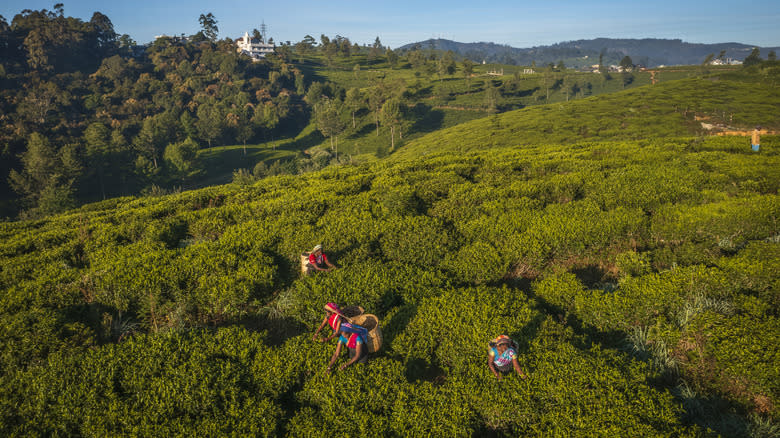Sri Lankan Kanji's Rich History As A Symbolic Tamil Dish

Food is a lot more than just a thing you eat. Think about humanitarian relief organizations, such as World Central Kitchen, which travels to the front lines of countries in crisis and learns the recipes of the local people so that it can provide people in need with a familiar, comforting taste and reaffirm cultural identity at times when that identity can be more difficult to understand or to feel. Despite nearly three decades of Tamil genocide in Sri Lanka, kanji has survived -- and if you think there's nothing particularly political about rice gruel, think again.
Kanji (not to be confused with the Japanese writing system of the same name) is a simple porridge made from rice softened in boiling saltwater. Sometimes, it's mixed with coconut milk, served with vegetables, or garnished with onions and green chiles. The dish originally dates back to the Zhou Dynasty (1046-256 B.C.E.) in China where it was called congee, before expanding globally and subsequently adopting different names in Japan (okayu), Korea (juk), Thailand (khao tom), Vietnam (chao), and of course, Sri Lankan kanji.
Fast forward to today: Sri Lanka is home to the 17th largest active army in the world between Colombia and Japan, with domestic troops enacting strict military rule over Tamil civilians via surveillance, restrictions, detainment, and interrogation. Kanji may have a light, savory taste, but in Sri Lanka, a bowl of this porridge carries the memory of generational trauma and the fight for the cultural identity of a minority subculture -- an ongoing battle.
Read more: 21 Delicious Ways To Use Up Leftover Rice
Feeding The Future Of An Entire Population

The Sinhalese and Tamil peoples of Sri Lanka haven't seen eye-to-eye since as early as the 14th century. As a small, unique community with a largely insular cultural identity, the Tamils have long advocated for independent statehood. A strengthened wave of Sinhalese nationalism emerged in 1955, creating political instability with the Tamils, and Sinhalese was officially recognized as the official language of Sri Lanka over Tamil in 1978. Since then, the Tamils have endured a history of violent persecution by the Sinhalese majority, and during the 1980s, organized Tamil insurgencies began cropping up spearheaded by The Liberation Tigers of Tamil Eelam (LTTE), aka the Tamil Tigers.
These insurgencies finally culminated in a civil war that lasted for 26 years and ended in 2009, leading to 80,000 to 100,000 estimated casualties. During the war, the Sri Lankan government cut off food and medicine from the Tamil people. As malnutrition spread and starvation-related deaths grew, the Tamil sustained themselves on kanji, which was nourishing and required very few resources. During the war, civilians were trapped and bombed by the Sri Lankan government multiple times while standing in line to receive bowls of the nourishing porridge.
These days, preparing kanji at all is considered an act of political resistance and draws police attention. But, during hollowed, sacred events, older Tamils serve coconut shells full of kanji to younger generations and families share stories of the war and what it means to them to be a community.
Read the original article on Tasting Table.


